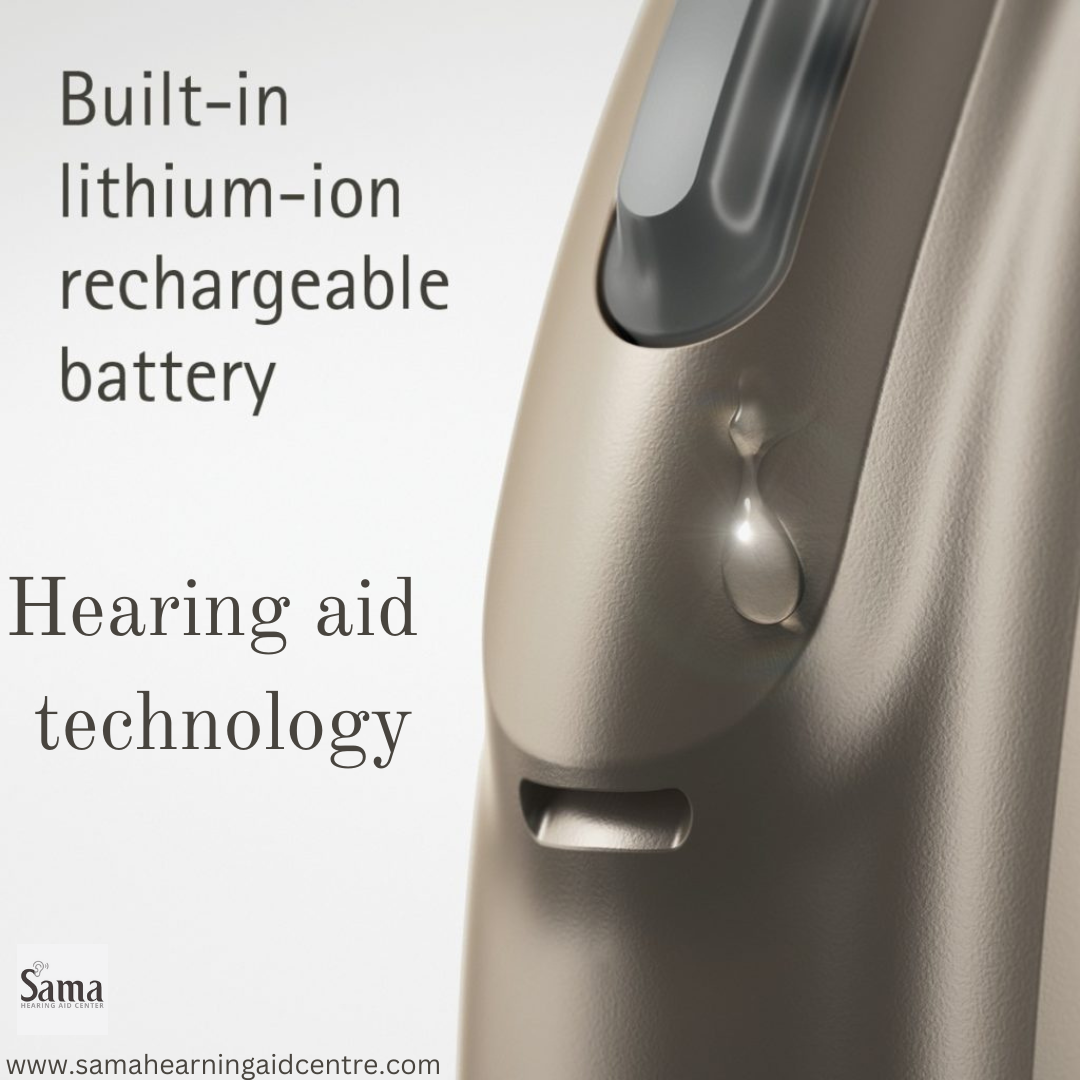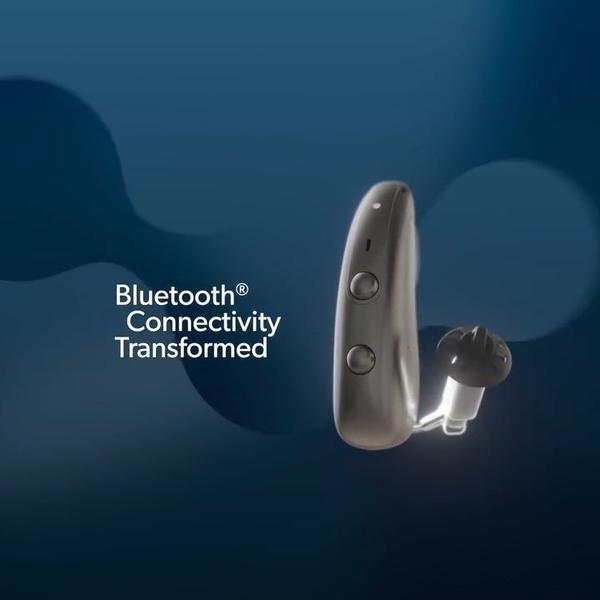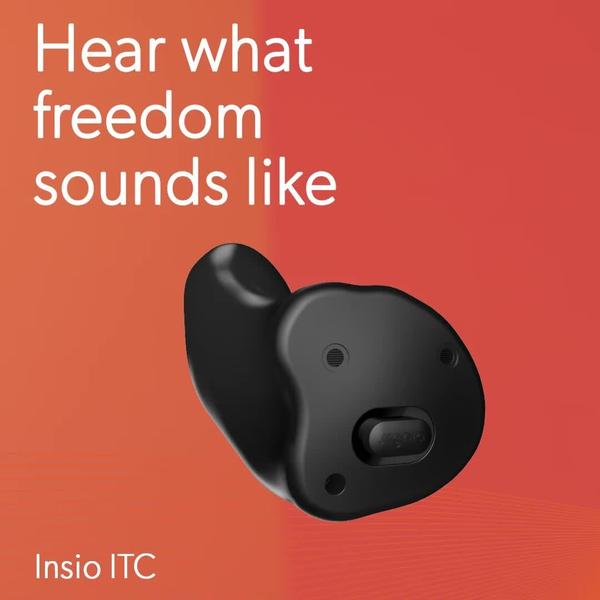
Hearing aid technology
The latest hearing aids come with AI technology and seamlessly connect to smartphones and other devices.
Hearing aid technology has improved a lot over the past few decades, but at their core, hearing aids have always been designed with four basic parts: a microphone, a processor, a receiver and a power source. The microphone picks up the sounds in your environment and passes it to the processor. The processor enhances the signal and delivers it to the receiver which delivers the amplified signal to the ear canal. The power source, or battery, drives the system
In addition, hearing loss advocates recommend that all hearing aids include four technological features: a telecoil, Bluetooth, a pleasing discreet design (also called a "form factor") and rechargeable batteries. These have been dubbed the "superfecta" features of hearing aids.
Hearing aid technology can be considered either advanced or basic, based on the sophistication of the processor. Even today’s basic digital hearing aids offer far more benefit than the best hearing aids of previous generations.
New and advanced hearing aid technology
As the level of technology increases, digital hearing aids become more automatic and have more features to help you communicate in difficult listening situations. New technologies translate to higher price points for hearing aids and greater benefits, though it's also important to have reasonable expectations about what hearing aids can do.
The following features are more likely to be offered in advanced hearing aids.
Top-of-the-line sound processing and frequency response
All hearing aids process sound, which means that when sound arrives into the hearing aid, it has to be sectioned into bands of sound (sometimes referred to as "channels") and digitized before it can be amplified. The better the hearing aid, the more flexibility it has to band sounds that are amplified for your unique hearing loss prescription.
For example, if you have only high-frequency hearing loss, a better-made hearing aid can amplify only those sounds within that band, whereas a lower-end model might amplify mid- and high-frequency sounds. This customization of the hearing aid is called its frequency response.
Bluetooth compatibility
Bluetooth compatibility is a wireless feature that enables hearing aids to connect to mobile phones and other devices that use Bluetooth, Bluetooth technology has the ability to improve the signal-to-noise ratio and eliminate feedback from the microphone because the signal bypasses the microphone and directly enters the hearing aid’s processor.
Artificial intelligence
Some premium hearing aids come with artificial intelligence (AI), which allows them to access a deep neural network to process sound. By logging volume control settings and program preferences for certain sound environments, the hearing aids can begin to make these changes automatically when the environment is detected.
Smartphone apps
Most of today's advanced hearing aids come with smartphone apps, allowing the user to make adjustments and monitor battery life
Waterproof design
Most hearing aids today are water-resistant, not waterproof. However, one hearing aid manufacturer, Phonak, now offers a waterproof hearing aid that they say can be submerged in up to two feet of water.
Two-way audio
Several manufacturers are now making hearing aids with two-way streaming audio in the microphone, which makes hands-free calling easier. When a call comes in to your smartphone, you can hear and speak via your hearing aids' microphone. (You do not need to speak into your smartphone.)
Basic hearing aid technology
Although still programmable by computer, basic hearing aids have limited adjustments available for fine-tuning to fit unusual patterns of hearing loss. They are also less customizable and automated than hearing aids with advanced technology.
Basic digital hearing aids also generally require you to make some manual adjustments in certain listening situations—such as turning a volume control up or down, or pushing a button on the aids to reduce noise coming from behind.
The following are examples of features that are usually included in basic hearing aid technology.
Wireless hearing aids
Wireless technology allows two hearing aids to operate together as one complete system, instead of acting as two independent devices. The sound input to both hearing aids is shared and decisions about the digital sound processing are based on the combined information. This is known as binaural processing. This technology mimics the brain's ability to process information coming from both ears and helps reduce manual adjustments.
For example, if one hearing aid is being triggered for directional mode, both hearing aids would likely switch into that mode at the same time. The data transfer rates for wireless hearing aids are measured in nanoseconds, which is much faster than human brain can detect. For the wearer, the adjustments are perceived in real time. Sound processing is therefore synchronized between the two hearing aids, thus improving sound quality for the wearer.
Wireless hearing aids are also capable of wirelessly communicating with external devices, most often via Bluetooth, telecoils
In essence, wireless technology improves hearing aids in two ways:
-By improving how hearing aids connect with each other (modern hearing aids can now deliver sound as a collaborative pair, instead of separately)
-By making it easier to connect with the world around you, as well as your favorite devices, like smartphones
Directional microphone systems
Directional microphone systems are designed to boost sounds coming from the front of the wearer and reduce sounds coming from other directions. Different system designs block out more or less of the sounds coming from behind the wearer. These systems improve speech understanding in background noise. Satisfaction is higher for hearing aids with directional microphone systems than for hearing aids without them.
Digital noise reduction
Digital noise reduction systems analyze the signal to determine if it contains unwanted noise. If this unwanted noise is detected, this system reduces the level of noise. This feature makes the background or environmental noise less annoying and increases your listening comfort. Digital noise reduction has been shown to be effective and preferred by hearing aid wearers.
Impulse noise reduction
Similar in purpose to the digital noise reduction, impulse noise reduction improves listening comfort. This system detects any transient loud noises, such as car keys rattling, typing on a keyboard or dishes rattling, and softens them instantly.
Wind noise reduction
Although fairly specific in its application, wind noise reduction can make a world of difference for those who spend time enjoying outdoor hobbies, like golfers and boaters. Wind noise reduction detects the impact of the wind blowing across the hearing aid microphones and avoids or reduces the amplification of it.
Feedback management systems
Feedback management systems combat the inevitable feedback (whistling) that occurs in a hearing aid. These feedback loops create an annoying whistling sound that can get in the way of your comfort. Feedback management algorithms can be implemented differently for basic hearing aids or advanced hearing aids. Basic feedback management systems may reduce the overall amplification to remove the whistling. Advanced feedback management systems reduce or eliminate whistling without affecting overall amplification of the hearing aid.
Data logging
Data logging is a feature that stores data about the listening environments in which you wear your hearing aids and your preferences for programs, volume levels and other features. The information can be accessed by the hearing healthcare professional when you return for a follow-up appointment. Your practitioner may use this valuable information to further customize your hearing aid fitting.
What are the real-world benefits of these features?
Imagine sitting in a typical busy restaurant, having dinner with friends. Sounds are coming from all directions, such as dishes clanking, people talking and laughing at other tables and waiters rushing about. You’re wearing your new hearing aids and listening to a friend who is sitting across from you at the table. She’s telling a joke. Your hearing aids are simultaneously reducing impulse noises like silverware clanking onto a plate (impulse noise reduction), reducing the whir of the ventilation system above (digital noise reduction), suppressing the voices of the people at the tables behind you (directional microphone system) and storing information about the listening environment to be saved for later fine-tuning (data logging). They’re doing all of this automatically while amplifying and shaping the speech signal from your friend. You are free to relax and enjoy the punch line.
This is just one example of today’s sophisticated hearing aid technology in action.




